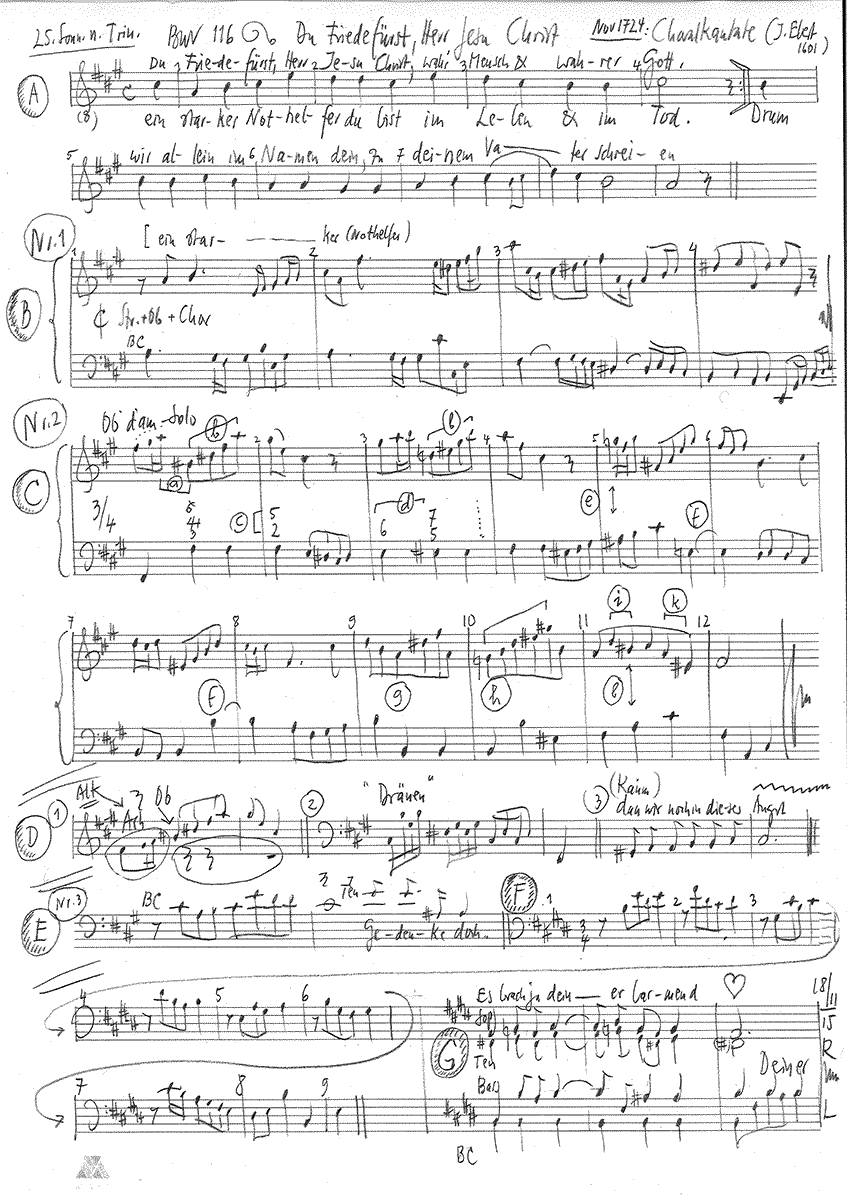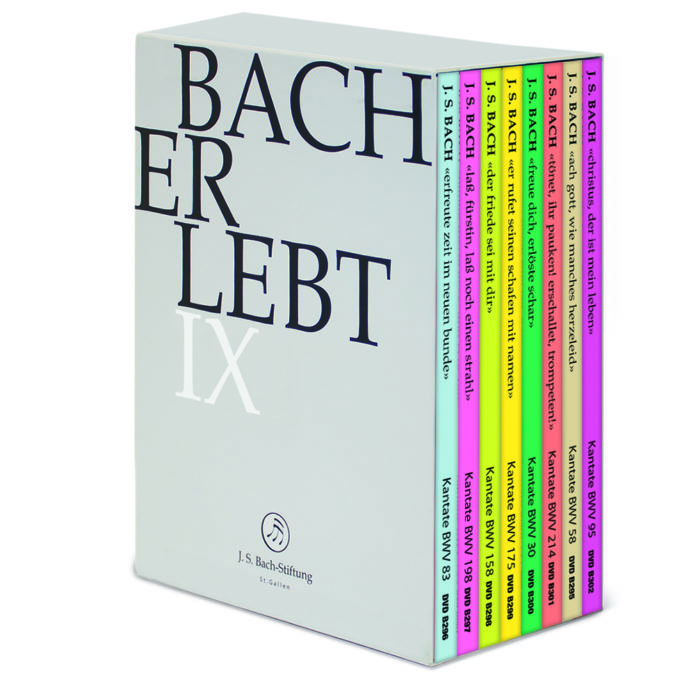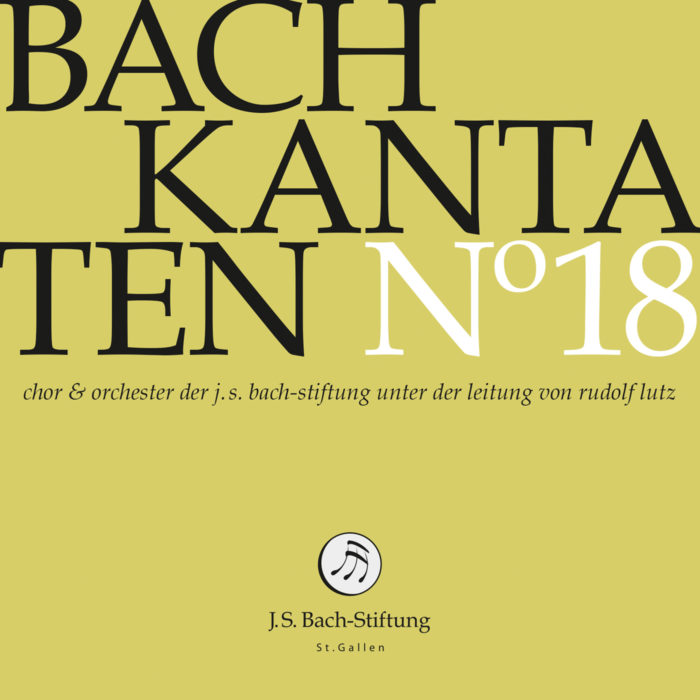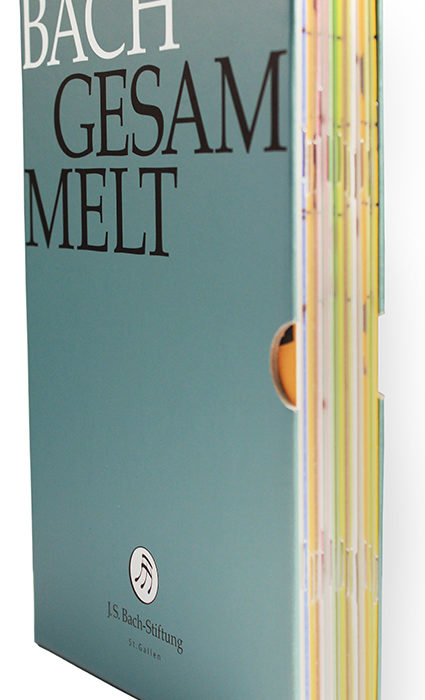Du Friedefürst, Herr Jesu Christ
BWV 116 // For the Twenty-fifth Sunday after Trinity
(Thou Prince of peace, Lord Jesus Christ) for soprano, alto, tenor and bass, vocal ensemble, corno, oboe d’amore I+II, strings and basso continuo
Composed in 1724, cantata BWV 116 is the part of Bach’s cantata cycle dedicated to the twentyfifth Sunday after Trinity. The work’s timeless entreaty for peace and deliverance from penury and retribution is, however, so potently expressed that Bach scholars long believed it had been written in reference to a specific occasion, for instance, the Silesian Wars that erupted in 1740 and brought devastation to Saxony. That all movements are set in keys with several sharps – indeed, that Bach’s score is at times barely legible for its plethora of double sharps and exalted harmonies – certainly befits the tense atmosphere of this penitential cantata.
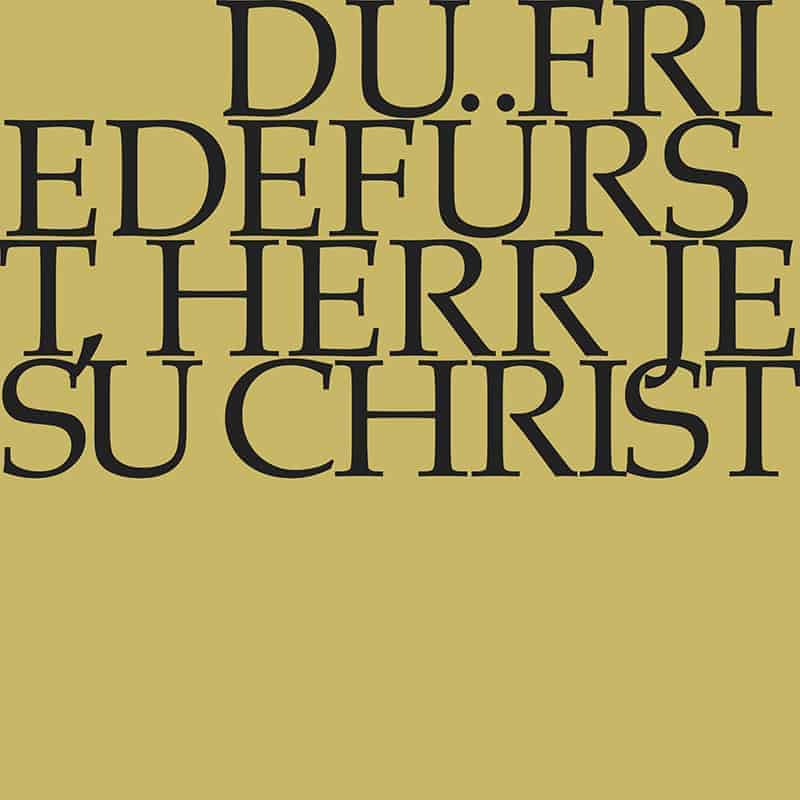
Would you like to enjoy our videos ad-free? Subscribe to YouTube Premium now...
Workshop
Reflective lecture
Choir
Soprano
Susanne Seitter, Noëmi Tran Rediger, Alexa Vogel, Anna Walker, Maria Weber
Alto
Jan Börner, Antonia Frey, Simon Savoy, Lea Scherer, Francisca Näf
Tenor
Sören Richter, Manuel Gerber, Marcel Fässler, Walter Siege
Bass
Fabrice Hayoz, Philippe Rayot, William Wood, Oliver Rudin, Daniel Pérez
Orchestra
Conductor
Rudolf Lutz
Violin
Plamena Nikitassova, Dorothee Mühleisen, Peter Barczi, Eva Borhi, Christine Baumann, Christoph Rudolf
Viola
Martina Bischof, Matthias Jäggi, Sonoko Asabuki
Violoncello
Maya Amrein, Mara Miribung
Violone
Iris Finkbeiner
Oboe d’amore
Katharina Arfken, Dominik Melicharek
Bassoon
Susann Landert
Corno
Olivier Picon
Organ
Nicola Cumer
Harpsichord
Jörg Andreas Bötticher
Musical director & conductor
Rudolf Lutz
Workshop
Participants
Karl Graf, Rudolf Lutz
Reflective lecture
Speaker
Heidi Tagliavini
Recording & editing
Recording date
20/11/2015
Recording location
Trogen AR (Schweiz) // Evangelische Kirche
Sound engineer
Stefan Ritzenthaler
Director
Meinrad Keel
Production manager
Johannes Widmer
Production
GALLUS MEDIA AG, Switzerland
Producer
J.S. Bach Foundation of St. Gallen, Switzerland
Librettist
Text No. 1, 6
Jakob Ebert, 1601
Text No. 2–5
Poet unknown
First performance
Twenty-fifth Sunday after Trinity,
26 November 1724
In-depth analysis
Set in an unusually shaded key of A major, the introductory chorus presents an agile, concertante-style orchestral framework for what initially appears to be a unambitious movement in which the chorale illuminates the setting’s finer fabric. And yet, the virtuoso foreimitations of chorale lines three and four reveal that the vocal and instrumental parts actually adhere to a fundamental concept: it is the “helper strong in need” that permeates the entire setting with his bold motives. Indeed, the chorale line, surrounded by an accompanying flurry of notes, struggles to assert itself in face of contention “in life as well as death” – key words that Bach musically shades with deft compositional skill.
In the following aria – a trio for alto, oboe d’amore and continuo – the composer employs a novel artistic device. Following the constrained ritornello, the vocalist makes a clear entry, yet can utter no more than two pained exclamations of “Ah!” – the phrase must be completed by the oboe. A more succinct rendering of the text “past all telling is our woe” is difficult to imagine; Bach breaks with musical logic to convey the hopelessness of a situation that is reliant on reassurance from a higher power. At present, however, shame and fear remain all-pervasive, and the vocalist can offer little to counter the “angry judge’s menace” of the chromatic wind cantilena and the oppressive downward pull of the continuo part.
Once again, the chorale offers consolation: the first line appears twice in the figured bass part of the tenor recitative. At the same time, however, this quote also embodies a musical reminder that Jesus, to whom the prayer is directed, is “a prince of peace” who should fulfil his office – the modest gesture thus harbouring a reproachful query.
Nevertheless, it is not a reply from the Saviour that follows, but a deeply humble and introspective movement that declares the unsparing confession of sin as a precondition for peace of the soul: we restless sinners have no right to redemption and support, but must rely on Jesus to bear with the imperfection of his creatures. For this moment of radical selfreflection, Bach conceived a setting in which worldly poverty goes hand in hand with harmonic tension and density. Set as a sparsely accompanied vocal trio for soprano, tenor and bass, the movement opens with a continuo prelude that is compositionally brilliant yet discreet in tone, and whose circling figures broach the setting’s subject with great hesitancy. This caution then gives way to a concerto of repentance marked by large leaps, painful sighs and close imitation, while the emotional middle section bears witness to Jesus’ heartache and compassionate sorrow. In this movement, Bach melds Lutheran mysticism, traditional musical figures, theatrical declamation and compositional artistry to realise a setting of astounding poignancy.
The instruments that had remained silent throughout the trio then transform the alto recitative into an impassioned accompagnato setting whose dissonant chords express the oppression of a whole “alarmed and harried land”. In view of the reiterated plea for peace from the opening verse, the arioso conclusion has the effect of a wondrous, redeeming word, while also foreshadowing the coming Advent and providing a reminder that without the stability of peace, neither state nor “order” can prevail.
After these intense struggles of the repentant soul, the closing chorale offers the consolation of community: when all words and human understanding fail, one can still – as manifested in Bach’s cantata – turn to the chorale and wholeheartedly join in the singing.
Libretto
1. Choral
Du Friedefürst, Herr Jesu Christ,
wahr’ Mensch und wahrer Gott,
ein starker Nothelfer du bist
im Leben und im Tod.
Drum wir allein
im Namen dein
zu deinem Vater schreien.
2. Arie (Alt)
Ach, unaussprechlich ist die Not
und des erzürnten Richters Dräuen!
Kaum, daß wir noch in dieser Angst,
wie du, o Jesu, selbst verlangst,
zu Gott in deinem Namen schreien.
3. Rezitativ (Tenor)
Gedenke doch,
o Jesu, daß du noch
ein Fürst des Friedens heißest!
Aus Liebe wolltest du dein Wort uns senden.
Will sich dein Herz auf einmal von uns wenden,
der du so große Hülfe sonst beweisest?
4. Terzett (Sopran, Tenor, Bass)
Ach, wir bekennen unsre Schuld
und bitten nichts als um Geduld
und um dein unermeßlich Lieben.
Es brach ja dein erbarmend Herz,
als der Gefallnen Schmerz
dich zu uns in die Welt getrieben.
5. Rezitativ (Alt)
Ach, laß uns durch die scharfen Ruten
nicht allzu heftig bluten!
O Gott, der du ein Gott der Ordnung bist,
du weißt, was bei der Feinde Grimm
vor Grausamkeit und Unrecht ist.
Wohlan, so strecke deine Hand
auf ein erschreckt geplagtes Land,
die kann der Feinde Macht bezwingen
und uns beständig Friede bringen!
6. Choral
Erleucht auch unser Sinn und Herz
durch den Geist deiner Gnad,
daß wir nicht treiben draus ein Scherz,
der unsrer Seelen schad.
O Jesu Christ,
allein du bist,
der solchs wohl kann ausrichten.



